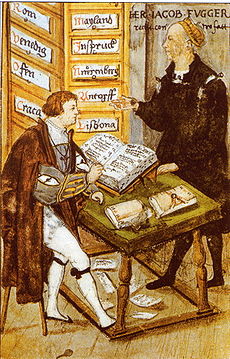My first job out of college was in financial auditing, and I’ve often found the time I spent learning the ways of the accountant useful in understanding business fundamentals.
So how does User Assistance (user documentation) appear through the prism of accountancy?

Accountant (image wikipedia)
Is it an asset? Assets are things you buy that have a value and could generate or be converted into cash. Some Content Strategists see content as “Intellectual Property”, an asset that can be re-used many times to maximise its value. Could this also be the case for User Assistance?
Is it an expense? An expense is something you buy that has a value, but that value gets used up within a short space of time. Expenses can be train tickets, telephone bills etc. For major expenses, a business may treat the item in a similar way to an asset – making sure they get the best value out of it before it runs out.
Is it income? Income is money that comes in from selling things. If you charge for user manuals, access to online Help or support, then it could be treated as something that generates an income.
Is it a liability? In the accounting sense, a liability is an obligation to pay someone for something you bought in the past. A bank overdraft is an example of a liability.
In most cases, an accountant would see User Assistance as an expense. However, there may be opportunities for it to be an asset, particularly in the future. However it is viewed, if you focus on maximising the value from User Assistance, then your accountant should be happy.

This is a great analysis. I believe User Assistance (documentation) can certainly be considered an asset if it helps the business reduce expenses or generate revenue. For example:
1. Software support is very expensive, and clear and relevant documentation (online help, manuals, tutorials, training materials, etc.) can help users find solutions to their questions and problems themselves, reducing the volume of calls to the support department. The initial investment in creating the documentation can be seen as building an asset that reduces expenses over the long term.
2. Providing documentation materials on the web as a means of educating potential customers (and then drawing them into buying the product or service) can be a powerful marketing strategy. A good example of this is the “HgInit” tutorials that Joel Spolsky of Fog Creek Software wrote for the Mercurial version control system. It’s one of the first search results for “Mercurial” and it does a great job of teaching you how to use it. But it’s also peppered with invitations to try his add-on product, Kiln. I get the impression that his initial investment in creating that documentation asset is generating a good deal of ongoing revenue.
[…] User documentation from an accountant’s perspective […]